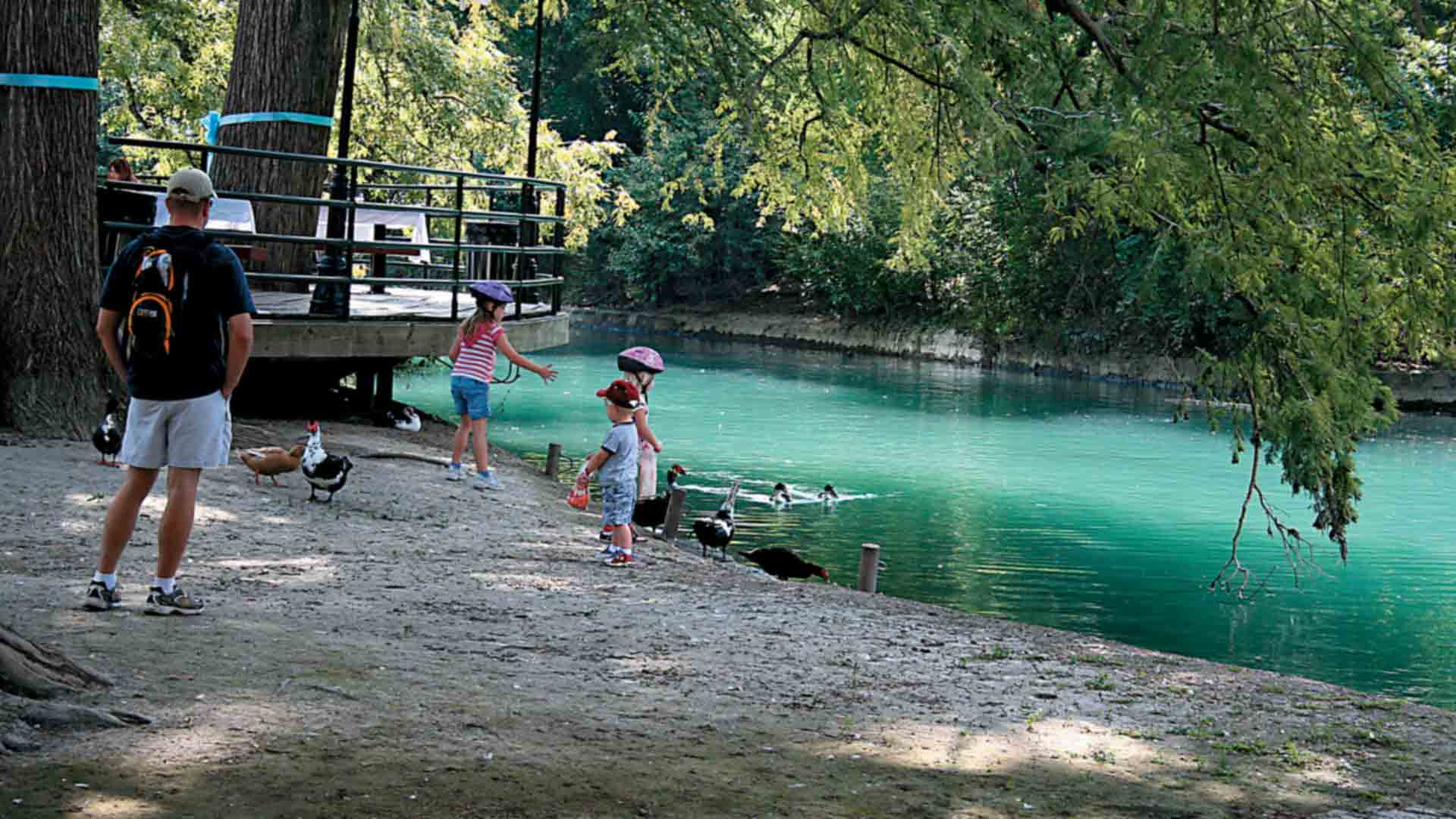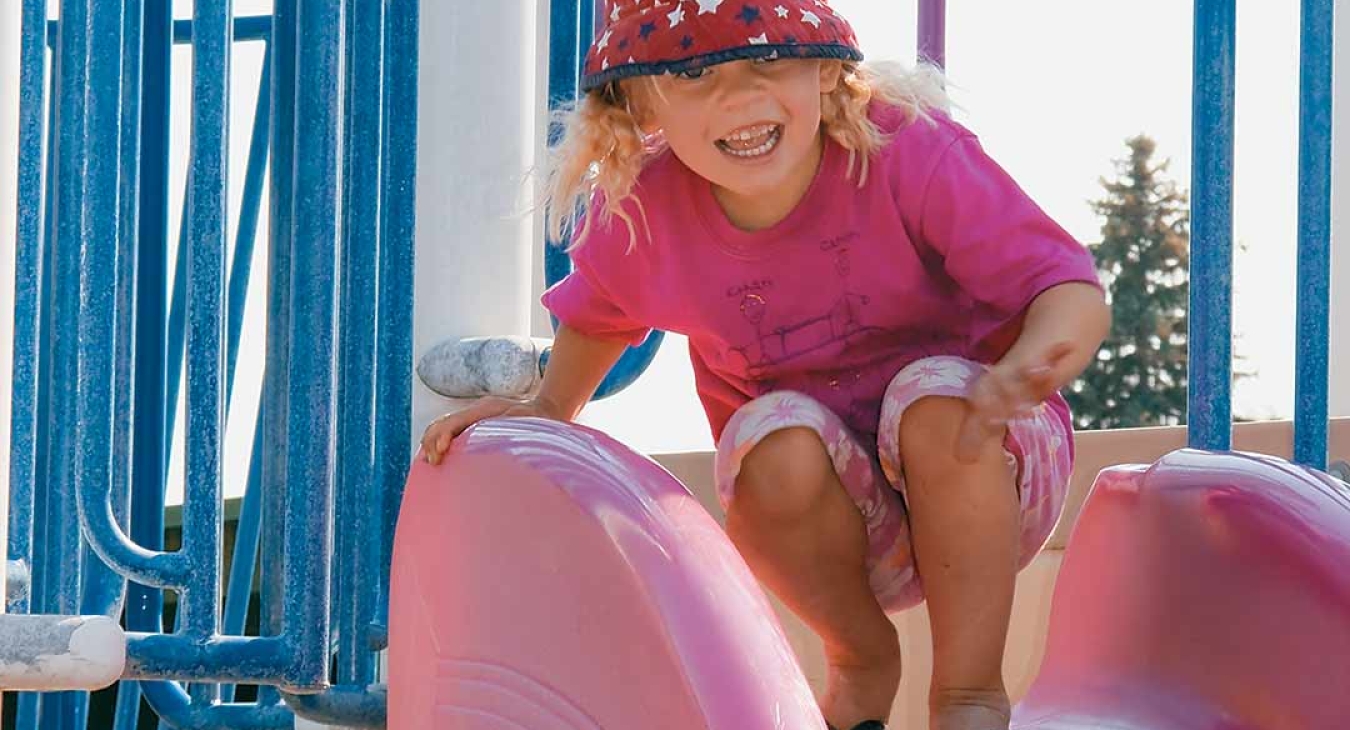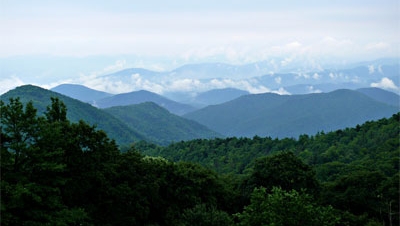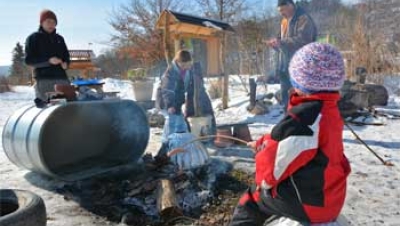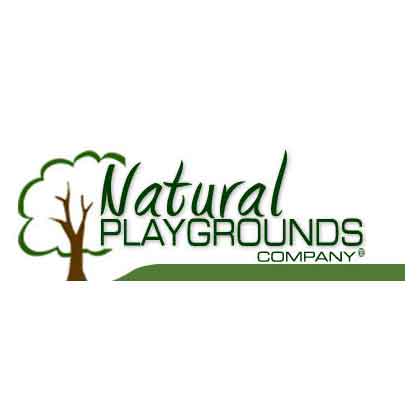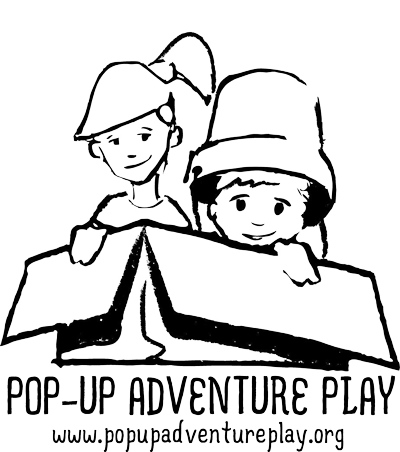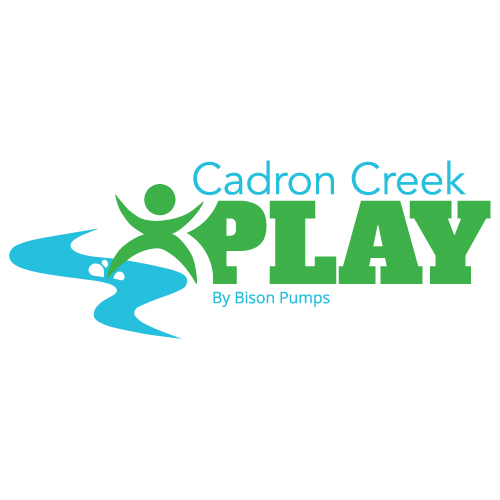An antidote for adult interference in children's play
The history of children’s play warns against both excessive adult interference and no involvement, yet shows that supervision, assistance, play leadership, or play work-- whatever the label--is a necessary element in play, learning, and development.
Even animals pass on the rudiments of play that equip their young for later challenges. Play is a social activity, passed on by tradition and modified by culture.
More than a century ago, during the early American Play and Playgrounds Movement, writers, and recreation specialists were pushing for trained play leaders for children’s playgrounds.
President Hoover served as Honorary Chairman of the Playground Association of America (PAA) upon its founding in 1906 and pointed out that simply furnishing spaces for playgrounds would not secure the best results in rescuing destitute children from the ravages of city streets: “There must be supervision of these playgrounds: otherwise the older and stronger children occupy them to the exclusion of the younger and weaker ones” (Mero, 1908; 39.) Even then, early observers of children at play saw certain advantages to supervised versus unsupervised playgrounds; some children need to be encouraged, while others need help with ideas or materials for their play projects. Some need assistance when interacting with older children, and many need assistance in the appropriate use of challenging equipment. As experience accumulated, the provision of trained play leaders became widely accepted as an antidote for such needs and problems, and the PAA formed a normal course in play.
In 1914, the Russell Sage Foundation identified 50 high schools, colleges, or normal schools offering courses in “play worker” training and by 1916 this number had expanded to about 100, with half in normal schools (college and university training programs for teachers). Many of these included university-based “training schools” for children allowing on-site research and firsthand experience for future play workers. Larger universities such as Harvard offered play courses and others offered play courses in departments of physical education. The Normal Course in Play prepared by the Playground and Recreation Association of America (Lee, 1925) was interdisciplinary, drawing from the fields of psychology, sociology, child study, anthropology, civics, pedagogy, physical education, dramatics, storytelling, and other topics adapted to correlate with other courses and appropriate to firsthand practice on playgrounds. Despite the focus on training, the guiding philosophy was, “Children should be a great deal let alone…they should be allowed, within wide limits, to manage their own affairs” (Lee, 1925: 109).
The Playleaders’ Manual (Mulac, 1941) provided very specific instructions for playleaders in training. They made community surveys to locate facilities and grounds for play, taught old and new games, and promoted nature study, music, handicrafts, and dramatics. They also taught respect for property, encouraged good personal habits, eliminated hazards, enforced safety rules, encouraged participation, advertised their playgrounds, and kept up-to-date records. The daily and weekly programs included free play periods, tournaments and contests, inter-playground competitive events, animal care, cooking outdoors, hiking, swimming, and play activities suited to a number of age groups.
Over time the early American playleader training programs and university training schools for children tended to disappear or be replaced by university child research and development laboratories. The next major movement to train playleaders evolved with the creation of junk or building playgrounds during World War II in Denmark and expanded as they spread to other European countries. These playgrounds were designated by Lady Allen of Hurtwood in the UK as “adventure playgrounds.”
Adventure playgrounds have not been successful in America due in part to misguided conceptions that they are “junky, “untidy,” and “hazardous.” They are constructed by children from natural and cast-off materials that contribute to their play value. Such stuff of play has been known by children for centuries but only recently “discovered” by adults. True adventure playgrounds have full-time play leaders or play workers who are friends to the children, provide spaces for play, help scrounge for materials and tools, and assist on an as-needed basis.
The early playleaders asked the right questions: Why not provide portions of existing playgrounds or open spaces for building with tools, creating with scrap, cooking over open fires, tending animals and gardens, playing in water and sand – just imagining and creating with malleable materials? The first Danish playleader at Emdrup learned early that children are sovereign and the initiative should come from them.
While play leadership, currently called playwork, remains popular in Europe, the American Adventure Playground Association, formed in 1976, was short-lived. Other American initiatives met only limited success. The Houston Adventure Playground Association, with three playgrounds and several playleaders (one trained in Germany), was phased out in about 2002. Lack of funding, safety concerns, and general malaise were noted as reasons for their removal. However, their safety record was better than that of traditional playgrounds. Surveys and tests showed that parents and teachers supported the program, children’s aggressive behavior was reduced, and children made significant gains in social responsibility and social problem-solving (Mauldin & Giles, 1989). European studies (Heseltine, 1998) conclude that the accident record of adventure playgrounds is better than for other forms of playground provision. Wisely, the European playground safety standard exempts fenced and supervised adventure playgrounds, allowing trained playworkers to be responsible for safety issues.
Playwork training programs are held in several UK universities and in other organized settings. The best of these programs are child-centered and are quite different from the adult agendas of after-school care, curriculum-based education, and health and safety programs (Brown, 2003). This could also be said of the typical approaches of American schoolyard supervisors with little or no training in child development or playwork. The typical pattern of play supervision at American schools is teachers sitting at benches, engaging in social exchange with one another and giving little attention to children’s play needs, or in the opposite extreme, overemphasizing rules formed solely by adults.
The best playworkers proceed from child-centered perspectives and focus on informal, personal approaches that yield responsibility to children as they develop social, physical, and intellectual skills. The following abbreviated overview of the roles of child-centered playworkers resulted from interaction with playworkers and children in European adventure playgrounds, discussion of experiences with longtime playworkers, and reviewing publications by leading figures in the playwork movement:
- They provide spaces, opportunities, and materials for children to explore and create in ever-changing settings.
- They ensure that the playground is well-equipped, staffed, and reasonably safe.
- They scrounge for materials and tools that the children need for their play.
- They refrain from interfering in play but join in play or teach new skills when asked or when children’s play cues signal a need.
- They maintain order but are friends with children.
- They make constructive suggestions and occasionally direct specific skills such as using tools, tending animals, or planting and tending gardens.
- They plan special play activities with children, listening to their suggestions and needs.
- They evaluate with children and plan together about resolving problems and needs.
- They maintain order and act as referees when things get out of hand.
- They observe children and respond to their individual play cues. They “know” their children and their needs.
- They help create environments that meet individual interests and compensate for play deficits.
- They help create environments that enhance social interaction, creativity, and freedom from pre-determined outcomes.
Compared to the best European playworker programs, typical American playground “supervision” is a wasteland of opportunity for children. Public school teachers and administrators rarely receive college or university training for playground supervision or playwork. Some public park departments provide playleaders for summer programs but funding may not allow their use after school hours or on weekends and holidays. Playworker training programs are sorely needed to help counter the decline of recess and parental fear about children playing in unsupervised neighborhood playgrounds. Trained playworkers can extend play opportunities and challenges to make outdoor play more competitive with indoor cyber play and attract children back to their traditional games. They can bring back the vitality of children’s play when children had virtually unlimited access to hills, streams, barnyards, and vacant lots, and were free to create from scrap and natural materials. They can help children create playgrounds that extend and complement the standard-built playgrounds that dot the American scene.
They can’t bring back all the vast wildness of past playscapes to every park and school in America, but they can create with children examples that magically blend modern technology and ancient nature.
References
- Brown, F. (Ed.)(2003). Playwork: Theory and Practice. Philadelphia: Open University Press.
- Hurtwood, L. A. (1968). Planning for Play. Cambridge, MA: The MIT Press.
- Lee, J. (1925). The Normal Course in Play. Washington, DC: McGrath.
- Lee, J. (1929). Play in Education. New York: Macmillan.
- Mulac, M. E. (1941). The Playleaders’ Manual. New York: Harper & Brothers.

